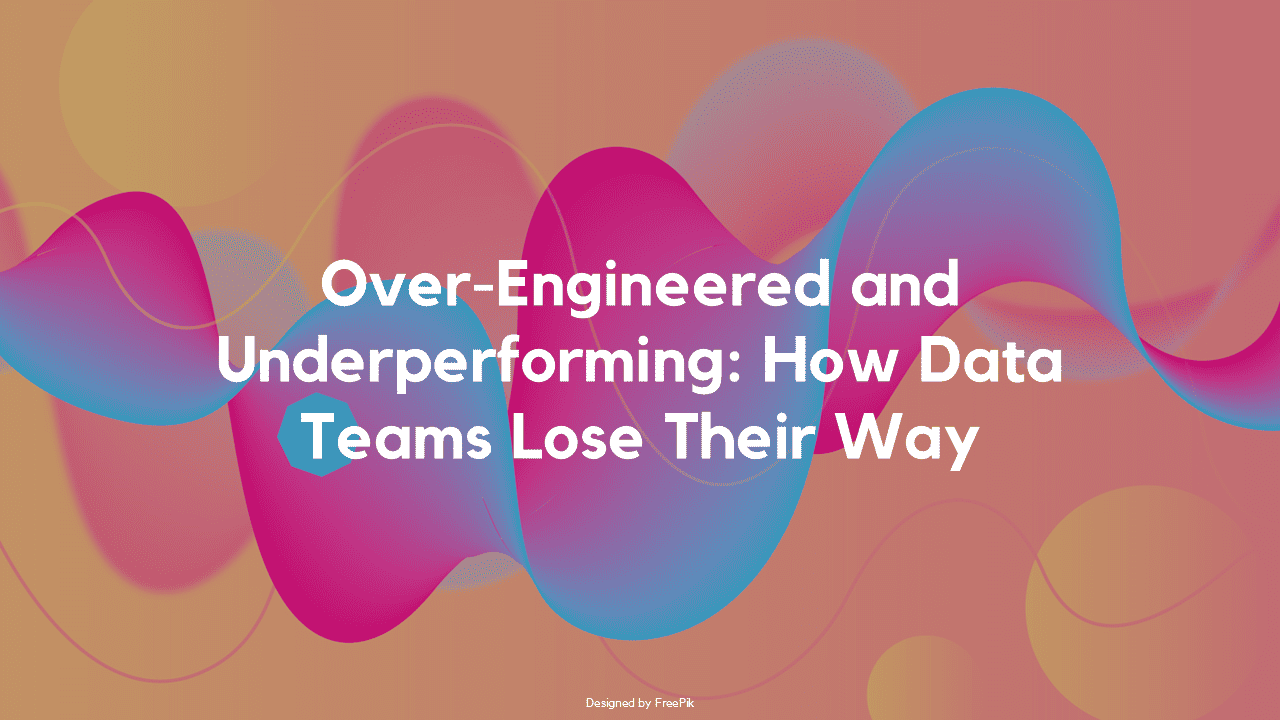
Over-Engineered and Underperforming: How Data Teams Lose Their Way
30 Jan, 20256 minutesIn today's data-driven world, companies rely heavily on data engineers to transform raw ...

In today's data-driven world, companies rely heavily on data engineers to transform raw data into actionable insights. However, in our years of recruiting top-tier data engineers, we've seen a common challenge: too much focus on data transformation and not enough on building a solid database design from the start.
The Pitfalls of Over-Engineering Data Transformation
One of the biggest complaints we often see when we talk to data engineers is how teams overcomplicate their data pipelines. Instead of optimising for efficiency and maintainability, engineers often create unnecessarily complex solutions—leading to bloated codebases, redundant transformations, and high maintenance overhead.
SQL vs. Python for Data Transformation: Which One is Better?
A common debate in data engineering is whether to use SQL or Python-based solutions like Pandas and PySpark. Here’s the key takeaway: always use SQL when possible.
✅ Why SQL?
- Optimised for querying large datasets
- Easier to maintain and debug
- More efficient for most data transformation tasks
❌ Where SQL Falls Short:
- Overuse of Common Table Expressions (CTEs) can create a maintenance nightmare
- SQL forces explicit column definitions, making some transformations cumbersome
When should you use Python for data transformation? PySpark or Pandas make sense when handling distributed processing, complex business logic, or when SQL alone is too restrictive. However, engineers should avoid unnecessary class structures or splitting logic across multiple repositories.
As one data engineer put it:
👉 “I hate diving through a codebase to realise it could have been done in <10 lines of SQL.”
Finding the Right Balance: Abstraction vs. Simplicity
Another key principle in data engineering is abstraction—but it should only be used when necessary.
🚀 Best Practices for Data Engineers:
- If a simple SQL query works, use it—don’t overcomplicate it with Python classes.
- Avoid excessive modularisation—splitting logic across too many repositories makes debugging painful.
- Use abstraction wisely—only when different teams need to work asynchronously without blocking each other.
Optimising Data Pipelines for Long-Term Success:
Some engineers prefer Spark data frames over SQL, and in certain cases, that’s valid. However, modularizing excessively can create unnecessary fragmentation. The best approach? Strike a balance between modularisation and simplicity.
💡 Key Takeaways for Data Engineers & Hiring Managers:
- Prioritise strong database design before diving into transformation logic.
- SQL is king for maintainability—use Python/PySpark only when necessary.
- Avoid over-engineering data pipelines—simplicity leads to better long-term outcomes.
Conclusion: Hiring the Right Data Engineers
From a recruitment perspective, companies looking to build high-performing data teams should prioritise engineers who value efficiency, maintainability, and simplicity. Over-engineered data pipelines lead to slow performance, frustrated teams, and increased costs.
📢 Hiring Data Engineers?
If you're looking for experienced data engineers who know how to balance SQL, Python, and database design, get in touch — we specialise in connecting top data talent with forward-thinking teams.


